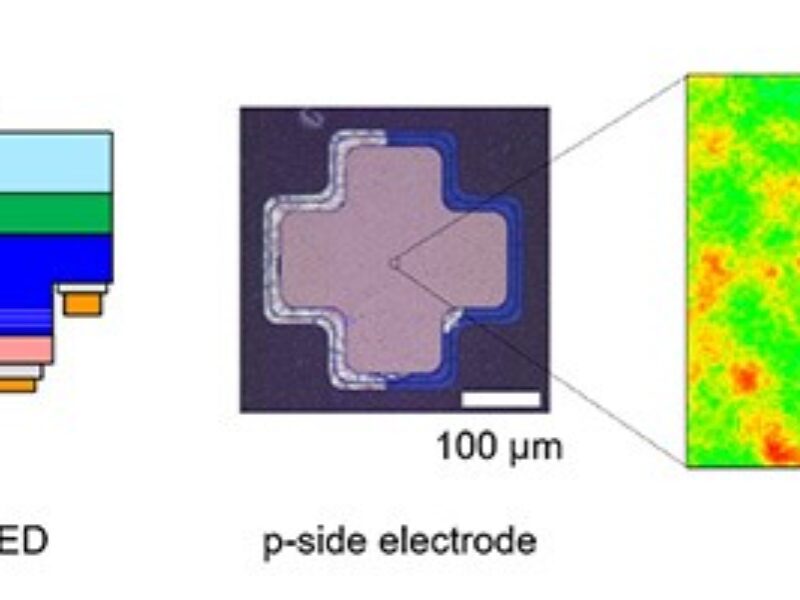
UV LEDs used for Covid-19 can enable low cost gigabit LiFi
Researchers in Japan have used ultraviolet LEDs in volume production for Covid-19 for high speed optical networking such as gigabit LiFi and 5G optical wireless communications (OWC).
One of the challenges in increasing the speed of optical networks is the LEDs need to be larger to provide the power. “A key technology for faster modulation is to decrease the device size,” said Kazunobu Kojima, associate professor at the Institute of Multidisciplinary Research for Advanced Materials at Tohoku University.” However, this tactic creates a dilemma: although smaller LEDs can be modulated faster, they have lower power.”
Another issue is that both visible and infrared optical wireless communications can have significant solar interference, according to Kojima. To avoid confusion with visible and infrared solar light, the researchers aimed to improve LEDs that specifically communicate via deep ultraviolet light, which can be detected without solar interference.
The researchers want to use the deep ultraviolet LEDs in 5G wireless networks as well as LiFi, where LEDs can provide data networking as well as lighting..
“LiFi’s critical weakness is its solar dependency,” Kojima said. “Our deep ultraviolet LED-based optical wireless technology can compensate for this problem.”
The researchers fabricated the deep ultraviolet LEDs on sapphire templates, which are considered an inexpensive substrate, and measured their transmission speed. They found that the deep ultraviolet LEDs were smaller and faster than traditional LEDs. The self-organized UV LED has a frequency response (F3DB) of 184MHz. This gave an effective data rate of 2Gbit/s under standard room lighting and 1Gbit/s under direct sun outdoors over a 1.5m direct line-of-sight channel.
“Deep ultraviolet LEDs are currently mass produced in factories for applications related to Covid-19,” Kojima said. These are used for sterilization processes. “So, they’re cheap and practical to use,” he said. “The mechanism underlying this speed is in how a lot of tiny LEDs self-organize in a single deep ultraviolet LED,” said Kojima.
“The tiny LED ensemble helps with both power and speed.”
The paper ‘Self-organized micro-light-emitting diode structure for high-speed solar-blind optical wireless communications’ was published in Applied Physics Letters: doi/full/10.1063/5.0013112
 If you enjoyed this article, you will like the following ones: don't miss them by subscribing to :
eeNews on Google News
If you enjoyed this article, you will like the following ones: don't miss them by subscribing to :
eeNews on Google News




